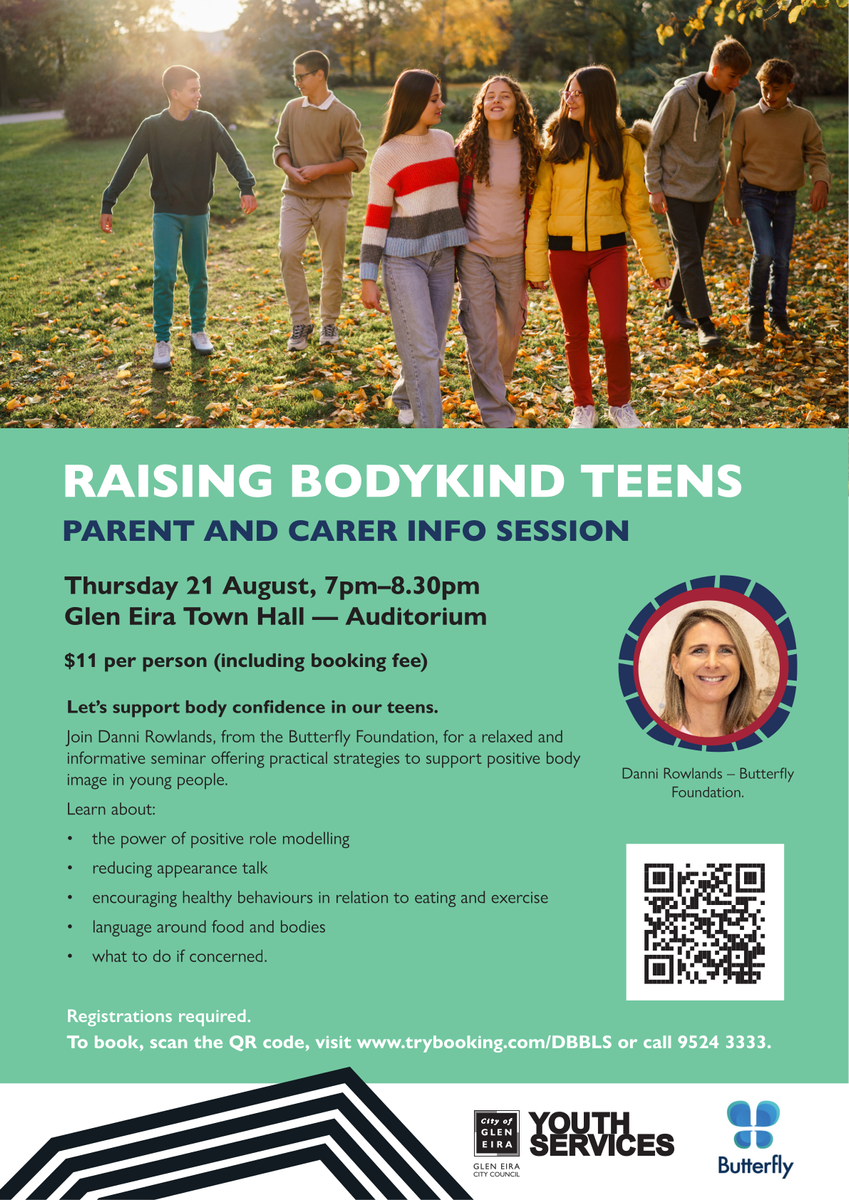Mental Health & Wellbeing Students/Parents/Carers Support
Articles, Videos & Resources

Mental Health & Wellbeing Students/Parents/Carers Support
Articles, Videos & Resources
Dear Parents,
Over the next few months, we’ll be running an informative series in the school newsletters, written by Australian Child Psychologist, Michael Hawton.
Michael (a former teacher himself) has spoken with hundreds of school leaders nationwide through a range of workshops addressing child and teen anxiety. Based on his close work in the education sector for many decades, Michael believes that far more parents are prematurely jumping in to fix a problem on their child’s behalf than was the case a generation ago.
Over the next six weeks, we’ll be exploring what anxiety looks like, what parents can do to alleviate anxious behaviours in children, and how ’jumping in’ to fix a perceived wrong-doing to a child may in fact be reducing a child’s ability to resolve problems independently.
The articles will also include some tips and strategies for parents to address anxiety early.
We hope you enjoy the upcoming series and welcome any feedback you may have.
Teenagers today are bombarded with information about climate change, global conflicts, and social injustices through social media and news platforms. Unlike younger children, adolescents have greater cognitive capacity to understand these issues, but they're also more likely to feel overwhelmed by their apparent magnitude and their perceived powerlessness to create change¹.
Whilst teenagers can think more abstractly than younger children, their brains are still developing, particularly the prefrontal cortex responsible for emotional regulation and long-term planning. This means they can understand complex global issues but may struggle to put them in perspective or manage the anxiety these issues provoke.
Research shows that teenagers who set unrealistic goals about changing the world are less happy than those who focus on achievable contributions. This is particularly relevant when discussing climate change and global issues with your teenager.
Four strategic approaches
Encourage Meaningful but Realistic Action
Rather than trying to solve climate change single-handedly, help your teenager identify specific, manageable ways to contribute. This might involve joining environmental groups at school, volunteering with local organisations, or researching careers that align with their values. The key is helping them understand that meaningful change happens through sustained, collective effort rather than grand gestures.
When teenagers feel they can contribute meaningfully to solutions, it builds what I call a 'growth mindset' - the belief that challenges are opportunities for growth rather than insurmountable obstacles². This approach helps them develop resilience thinking skills that will serve them throughout their lives.
Discuss Media Consumption Critically
Teenagers are sophisticated consumers of information, but they need guidance in developing media literacy. Discuss how news outlets and social media platforms are designed to capture attention through dramatic presentation. Help them identify reliable sources and encourage them to limit their consumption of distressing content.
Unlike with younger children, complete avoidance isn't realistic or appropriate for teenagers. Instead, help them develop skills to critically evaluate information and manage their emotional responses to it. This includes understanding how the constant stream of negative news can create a distorted view of reality.
Facilitate Deep Conversations
Teenagers need space to express their concerns about world events without judgment. Create opportunities for meaningful discussions about their fears and frustrations. Listen actively to their perspectives and validate their emotions whilst helping them think through realistic responses.
Use these conversations to explore complex topics like the balance between individual responsibility and systemic change, the role of technology in both creating and solving problems, and how to maintain hope whilst acknowledging serious challenges. These discussions help teenagers develop sophisticated thinking skills and emotional regulation strategies.
Model Proportional Response
Show your teenager how to respond proportionally to global challenges. This means taking appropriate action without becoming consumed by anxiety about things beyond individual control. Demonstrate how to stay informed without becoming overwhelmed, how to contribute meaningfully without taking on unrealistic responsibility, and how to maintain hope whilst acknowledging difficulties.
Supporting Emotional Regulation
Teenagers are particularly susceptible to anxiety about global issues because they're developing their sense of identity and place in the world. Help them understand that feeling concerned about climate change and global injustices reflects their developing moral reasoning and empathy - these are positive qualities that, when channelled appropriately, can lead to meaningful contributions.
However, it's important to help them distinguish between productive concern that motivates action and overwhelming anxiety that leads to paralysis. Teach them techniques for managing intense emotions, such as mindfulness practices, physical exercise, and maintaining connections with friends and family.
Building Future-Focused Resilience
The goal with teenagers is to help them develop what I call 'active hope' - the ability to maintain optimism whilst taking concrete steps towards positive change. This involves helping them understand that whilst global challenges are real and serious, human ingenuity, cooperation, and sustained effort have solved significant problems throughout history.
Encourage your teenager to think about their long-term goals and how they might contribute to solutions in their future careers or civic engagement. This forward-thinking approach helps them see themselves as part of the solution rather than helpless victims of global problems.
Discussing world events with teenagers requires balancing honest acknowledgement of challenges with realistic hope for positive change. By helping your teenager develop critical thinking skills, emotional regulation strategies, and a sense of agency, you're preparing them to be thoughtful, resilient citizens who can contribute meaningfully to addressing global challenges.
Remember, the goal isn't to eliminate your teenager's concern about world events - their awareness and care are signs of healthy moral development. Instead, we want to help them channel these concerns into productive action whilst maintaining their mental health and optimism about the future.
¹ Harvard Center on the Developing Child, "The Science of Resilience" (2015)
² Dweck, C., "Mindset: The New Psychology of Success" (2006)
Michael Hawton is founder of Parentshop, providing education and resources for parents and industry professionals working with children. He has authored two books on child behaviour management: Talk Less Listen More and Engaging Adolescents. You can find more information, including his books and self-paced online parenting courses at https://www.parentshop.com.au/parent-courses/


By Michael Hawton, Child Psychologist (MAPS) and Parentshop founder.
The primary school years represent a critical window for developing the emotional resilience that will serve your child throughout their life. Yet increasingly, I'm observing Australian parents falling into what I call 'appearances parenting' - rushing to rescue their children from every disappointment or challenge, often more concerned with how their parenting looks to others than what truly serves their child's development.
Jonathan Haidt's research in his book The Anxious Generation reveals that we're facing an unprecedented shift in childhood. We've become overprotective in the real world whilst under protective in the virtual world. For primary-aged children, this manifests as parents who won't let their 8-year-old walk to the corner shop alone but will hand them an iPad or phone unsupervised for hours.
This overprotection in the real world is robbing our children of essential learning opportunities. When we consistently step in to resolve their playground disputes, complete their forgotten homework, or smooth over every social disappointment, we're inadvertently teaching them that they're incapable of managing life's inevitable challenges.
Perhaps most concerning is the research showing an increase in children with an external locus of control - the belief that their destiny is determined by outside forces rather than their own actions. Locus of control refers to the extent to which individuals believe they have control over the events in their lives. It's a concept in psychology that describes whether a person believes their actions and decisions influence outcomes, or whether external forces like luck, fate, or other people are more responsible.
An external locus of control correlates to higher levels of anxiety and learned helplessness while an internal locus of control is related to more resilience thinking and higher academic results. This shift directly correlates with rising anxiety levels in young people. When children believe they have no control over outcomes, they naturally become more anxious and helpless.
The solution isn't to throw children into the deep end without support. Instead, we need to become skilled at scaffolding their problem-solving abilities and helping them to challenge cognitive distortion. When your Year 5 child comes home upset because their friend didn't play with them at lunch, resist the urge to immediately contact the teacher or arrange a playdate.
Instead, try these approaches:
Ask curious questions: "If you could imagine tomorrow going really well with your friend, what would need to happen?" This helps them visualise positive outcomes and think through practical steps.
Challenge catastrophic thinking: When they declare "Everyone hates me," ask them to look for evidence both ways. "Can you think of three people who showed kindness to you this week?"
Practice problem-solving: "What are a few different things you could try tomorrow to make lunch time more fun?"
It is more commonplace in Australian schools and within Australian families to, whilst well-intentioned, inadvertently contribute to this problem through structures that reward maintaining children on anxiety lists rather than helping them overcome their challenges.
When schools receive letters excusing children from normal activities like sports or public speaking "to avoid stress," they're often acting against best clinical practice or long-term resilience building for the child. The research is unequivocal: accommodation increases anxiety over time.
Accommodation in a psychological sense refers to parents or schools adjusting a task for a child to reduce or prevent a child's distress. While this is sometimes necessary, overtime it can be unhelpful or harmful to child’s resilience and development. What actually reduces anxiety is gradual exposure to the challenging event - helping children have a go at increasingly challenging tasks with appropriate support.
Practical Strategies for Parents
Start with age-appropriate independence. Let your 6-year-old pack their own school bag, even if they forget something occasionally. The natural consequence (borrowing a pencil or going without a snack) teaches responsibility more effectively than your constant reminders.
Create problem-solving opportunities. When siblings fight, don't immediately arbitrate. Ask them to come up with three possible solutions and choose one to try.
Model emotional regulation. When you face your own challenges, narrate your problem-solving process aloud: "I'm feeling frustrated about this traffic, but I can choose to use this time to plan my day instead of getting angry."
The goal isn't to eliminate all stress from your child's life - it's to help them develop the tools to manage stress effectively. Every challenge they overcome independently builds their confidence and resilience for the bigger challenges ahead.
Remember, building resilience is like physical fitness - it requires regular practice with gradually increasing challenges. I like to say, prepare the child for the road ahead, not the road for the child. By scaffolding rather than rescuing, you're giving your primary-aged child the greatest gift possible: the belief that they can handle whatever life brings.
Michael Hawton is founder of Parentshop, providing education and resources for parents and industry professionals working with children. He has authored two books on child behaviour management: Talk Less Listen More and Engaging Adolescents. You can find more information, including his books and self-paced online parenting courses at https://www.parentshop.com.au/parent-courses/


By Michael Hawton, Child Psychologist (MAPS) and Parentshop founder.
Every parent knows this scenario: your child comes home upset about a school problem—being excluded from a group project, receiving an unfair detention, or friendship troubles. Their distress is genuine, and your instinct is to protect and fix things. But should you?
School leaders across Australia report a significant increase in parental interventions over seemingly minor issues. This isn't just helicopter parenting, it reflects our heightened awareness of potential problems and anxiety about our children's wellbeing. However, this vigilance may inadvertently undermine our children's resilience and problem-solving abilities.
Research by Dr. Eli Lebowitz and his colleagues at Yale Child Study Center has shed fascinating light on what happens when parents consistently step in to alleviate their children's distress. This behaviour, known as "accommodation," involves changing our own actions to prevent or reduce our child's anxiety or discomfort.[1]
When parents immediately contact schools about conflicts, request teacher changes, or remove children from uncomfortable situations, we unintentionally communicate: "This situation is too difficult for you to handle." Research shows this can inadvertently maintain and increase childhood anxiety over time[2].
The challenge is being supportive without accommodating. Instead of saying, "Don't worry, I'll speak to your teacher about that detention," try: "That sounds frustrating. What do you think your options might be?" This acknowledges their distress while empowering them to develop coping strategies.
A 5-step framework for decision-making for parents
1. Assess safety: If your child faces physical danger or serious psychological harm (persistent bullying, discrimination), immediate intervention is appropriate.
2. Apply the "what if" test: Ask yourself what would happen if you didn't intervene. Often, your child might feel uncomfortable but isn't in genuine danger.
3. Consider the learning opportunity: Could this situation help develop important life skills like disappointment management, conflict resolution, or self-advocacy?
4. Check your emotions: Approach the situation with "caring detachment"—caring for your child's distress without becoming distressed yourself.
5. Evaluate patterns: Is this part of a recurring pattern where you consistently solve problems your child could handle?
When choosing not to intervene directly, you're providing something valuable: the opportunity to develop coping capacity. Here's how to support effectively:
Sometimes working with schools is essential. The key is involving your child in the process: "I think this warrants a conversation with your teacher. Would you like to speak to them first, or shall we arrange a meeting together?" This maintains your child's agency while providing necessary support.
Parenting isn't about ensuring children never face difficulties—it's about preparing them to navigate challenges with confidence. Every time we resist immediately fixing a problem our child could handle, we make a deposit in their confidence bank.
The most loving thing we can do is believe in our children's capacity to cope, even when they don't yet believe in it themselves. By supporting without accommodating, we help them develop the resilience they'll need throughout life.
To learn more about supporting your child's emotional development and building resilience, explore our resources at Parentshop - https://www.parentshop.com.au/for-parents/.
Michael Hawton is founder of Parentshop, providing education and resources for parents and industry professionals working with children. He has authored two books on child behaviour management: Talk Less Listen More and Engaging Adolescents. You can find more information, including his books and self-paced online parenting courses at https://www.parentshop.com.au/parent-courses/
[1] Lebowitz, E. R., Woolston, J., Bar-Haim, Y., Calvocoressi, L., Davenport, T., Hunter, L., ... & Leckman, J. F. (2013). Family accommodation in pediatric anxiety disorders. Depression and Anxiety, 30(1), 47-54. https://doi.org/10.1002/da.21998
[2] Lebowitz, E. R., Panza, K. E., Su, J., & Bloch, M. H. (2012). Family accommodation in obsessive-compulsive disorder. Expert Review of Neurotherapeutics, 12(2), 229-238. https://doi.org/10.1586/ern.11.200
By Michael Hawton, Child Psychologist (MAPS) and Parentshop founder.


In the previous article, I cited the work of Professor Patrick McGorry and his colleagues in The Lancet Psychiatry Commission, highlighting the mental health crisis facing our young people.
McGorry's Commission highlights several factors contributing to the current mental health crisis among Australian youth. Social media exposure, climate anxiety, and what they term "global megatrends" are creating unprecedented pressures on developing minds.¹ As parents, you're navigating uncharted territory—our children face challenges we never encountered at their age.
This reality means we need to be more vigilant than previous generations about recognising early warning signs. The old approach of "they'll grow out of it" is no longer sufficient when dealing with the current epidemic of childhood anxiety.
Here's where I want to emphasise something crucial: research shows that when significant adults in a child's life learn how to respond appropriately to anxiety, their intervention can be as effective as professional psychological treatment for mild to moderate anxiety levels.[1] This means that as parents, you have more power than you might realise to help your child develop coping skills.
However, many parents hesitate to intervene because they worry about being "mean" or making things worse. This is misguided thinking. Teaching children to challenge anxious thoughts and face manageable fears isn't cruel—it's essential preparation for life's inevitable challenges. As I often say, it's better to prepare the child for the road rather than the road for the child.
Red Flags That Warrant Professional Help
While many children can manage anxiety with family support, certain warning signs indicate the need for professional intervention:
The goal isn't to eliminate anxiety entirely—that's neither possible nor desirable. Instead, we want to help children develop what I call "robustification" skills. This involves teaching them to recognise anxious thoughts, question their validity, and develop practical coping strategies.
Start by helping your child understand that anxiety is a normal human emotion that everyone experiences. Normalise the feeling while teaching them that they don't have to be controlled by it. Encourage problem-solving rather than avoidance and model calm responses to stress in your own life.
Create predictable routines and environments that foster a sense of security, whilst gradually exposing your child to manageable challenges that build confidence. Remember, building resilience is like strengthening a muscle—it requires consistent, progressive effort.
Given the scale of the mental health crisis documented by McGorry and his colleagues, we can't afford to wait for symptoms to become severe before acting. Early recognition and intervention are our best tools for helping children develop the resilience they'll need to navigate an increasingly complex world.
As parents and community members, we have a responsibility to become more skilled at recognising anxiety in children and responding effectively. This isn't about creating a generation of anxious parents, but rather about equipping ourselves with the knowledge and tools needed to support our children's mental health in challenging times.
By learning to recognise anxiety early and responding with appropriate support for your child, we can help reverse the troubling trajectory that McGorry's research has identified and give our children the tools they need to thrive.
References:
1. McGorry, P.D., Mei, C., Dalal, N., et al. (2024). The Lancet Psychiatry Commission on youth mental health. The Lancet Psychiatry, 11(9), 731-774.
2. Creswell, C., Parkinson, M., Thirwall, K., & Willetts, L. (2017). Parent led CBT for child anxiety. Guilford Press: New York.


By Michael Hawton, Child Psychologist (MAPS) and Parentshop founder.


As a psychologist who has worked with families for over thirty years, I've witnessed firsthand the sharp rise in childhood anxiety that's sweeping across Australia.
What once seemed like isolated cases have now become the norm in many households and classrooms. The recent work by Professor Patrick McGorry and his colleagues in The Lancet Psychiatry Commission paints a stark picture: we're facing a mental health crisis among our young people that has reached what they describe as a "dangerous phase."[1]
McGorry's research reveals that the mental health of emerging adults in Australia has been declining steadily for the past two decades, with anxiety disorders at the forefront of this troubling trend. The COVID-19 pandemic and global megatrends—including social media pressures, climate anxiety, and economic uncertainty—have further accelerated this decline.¹ As parents, this means we must become more adept at recognising the early signs of anxiety in our children before these patterns become entrenched.
Before we dive into identification, it's essential to understand that anxiety exists on a spectrum. We must be careful not to pathologize every worried thought or nervous moment our children experience and be cautious of the language we use around children.
The term ‘anxiety’ is becoming more common in everyday language and that can result in children using it in their self-talk, their internal dialogue – ‘I’m feeling anxious today’,” I can’t do it, I’m too anxious’. Normal developmental anxiety—such as a child worrying about a school test or feeling nervous before a performance actually serves an important purpose in building resilience, and gives them experience of overcoming worrying times.
However, when anxiety becomes persistent, interferes with daily functioning, and causes significant distress, we're looking at something that requires intervention. The key distinction lies in whether the anxiety is proportionate to the situation and whether it's preventing your child from engaging in age-appropriate activities.
Early childhood and early primary (Ages 3-6)
Young children often express anxiety through their behaviour rather than words. Look for sudden clinginess when separation was previously manageable, frequent complaints of tummy aches or headaches without medical cause, and regression in behaviours they've already mastered (such as toilet training or sleeping independently). These children might also develop intense fears of imaginary threats or become unusually upset by changes to routine.
Primary school years (Ages 7-12)
School-aged children may begin to articulate their worries more clearly, often focusing on academic performance or social acceptance. You might notice excessive worry about being "perfect," avoidance of school activities or social situations, and physical complaints that seem to coincide with stressful events. These children often seek repeated reassurance about everyday situations and may struggle with decision-making.
Children's bodies often tell the story before their words do. Persistent headaches, stomach complaints, muscle tension, and sleep disturbances are common physical manifestations of anxiety. Emotionally, you might observe heightened reactivity—what seems like an overreaction to minor setbacks, increased irritability, or sudden tearfulness over seemingly small issues.
Pay particular attention to avoidance behaviours. When children consistently dodge activities, they once enjoyed, refuse to attend social gatherings, or resist going to school, anxiety may be the underlying culprit. These patterns often develop gradually, making them easy to miss until they become entrenched.
Next article: Responding to Anxiety in Children: What you can do as a parent
References:
1. McGorry, P.D., Mei, C., Dalal, N., et al. (2024). The Lancet Psychiatry Commission on youth mental health. The Lancet Psychiatry, 11(9), 731-774.


Better Health Network’s (BHN) Health Promotion team is working with Primary Schools to ensure all children have a positive relationship with food and their bodies. Through the use of co-design and best practice evidence, they are working with teachers, students and families to understand and align the mealtime environment that is role modelled to children.
Through this work, Ripponlea Primary School will have a set of Lunchtime Values that have been created with robust engagement and input from families. Reflective practice focus group sessions will be held with staff, students, and families. We want to hear from families on their experiences of mealtimes at home and at the school.
These insights together with those of the teachers and students will help to contribute to a positive lunchtime environment at Ripponlea Primary School.
If you are interested in participating, please get in touch.